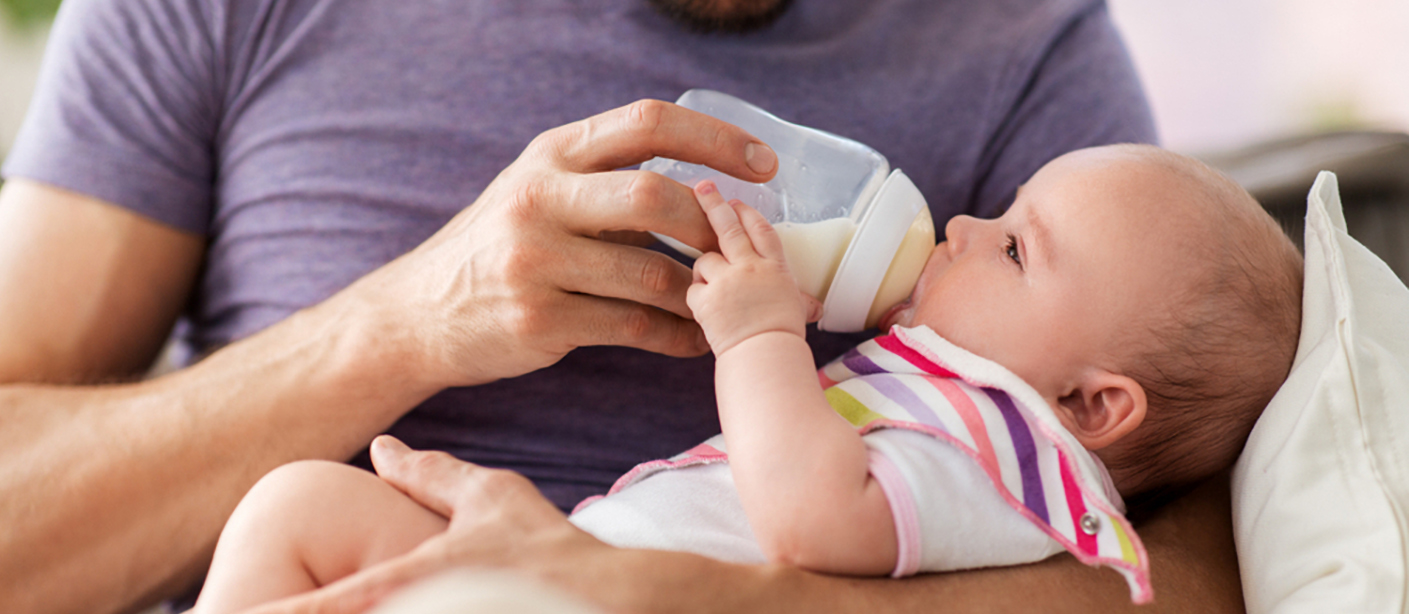What to Consider When Preparing Formula
Now that you've decided on a formula, follow these guidelines to ensure feeding time goes smoothly.
1. Don't let the formula sit out.
If possible, prepare a bottle of formula immediately before feeding your baby. If you do have to mix a few bottles ahead of time refrigerate immediately. This is a good food-safety practice to minimize any potential microbial growth. Refrigerate any bottle you won't use immediately and serve it within 24 hours – or according to the refrigerated storage time on the product label.
2. Throw away any of the formula left in a bottle after a feeding.
Discard any formula left in the bottle as leftover formula has now been exposed to baby’s mouth and the environment and could spoil.
3. Know how much formula to prepare.
Since any excess formula will go to waste, it's best to measure the proper amount. For the first 6 months of life, a baby needs about 2 to 2.5 ounces of formula per pound per day. If your baby is 10 pounds, that's about 20 to 25 ounces per day. That said, each baby will eat a different amount. Look for cues to assess whether your child is full. They may turn their head to the side or stop sucking.
4. Don't microwave the formula.
Heating up formula doesn't offer advantages or health benefits. If your baby will take a cold bottle, don't heat it up. If they do prefer warm formula, use a bottle warmer or submerge the bottle in warm water, rather than using the microwave. One of the concerns in using a microwave oven for heating is the difficulty in temperature regulation; high temperatures may be reached very quickly. It is important to check the temperature of the prepared formula just prior to feeding.
5. Measure the water carefully.
Although it may be enticing to eyeball the amount of water you add to the formula, it's important to carefully follow the instructions on the container. Measure the water first, and then add powder or concentrate. Too much water will dilute the nutrients in the formula.
6. Store the formula properly.
Follow the storage instructions on the label. Prepared formula should be refrigerated after opening or preparing. Unopened formulas should be stored in a cool, dry place.
7. Check the "use by" date.
Most powdered formulas need to be used within one month of opening the container. If it takes you a while to finish a container of formula, write the date that you opened it directly on the container. Check the label for any specific instructions or a "use by" date, and don't serve the formula after that time.
Formula feeding doesn't have to be hard. By assessing your baby's feeding needs and following the best practices for preparing a bottle, you can help your infant grow properly and stay healthy.




Social Share